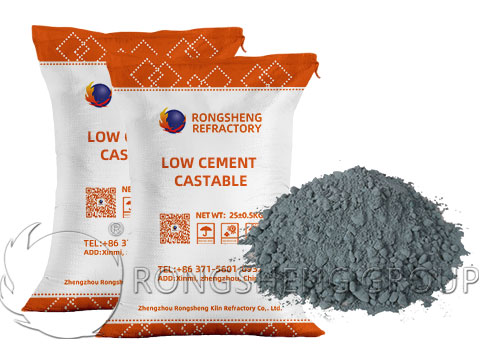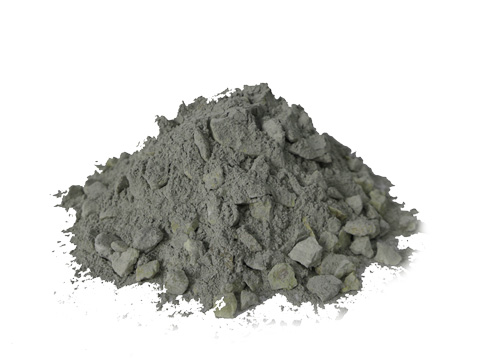Low-cement castables are mainly used in various heat treatment furnaces such as furnace walls, furnace roofs, furnace bottoms, aluminum ladles, chutes, smelting equipment, high-temperature kiln linings, heating furnaces, and soaking furnaces of aluminum melting furnaces. Low-cement castables have high refractoriness, good high-temperature performance, high medium-temperature, and high-temperature strength, and good anti-stripping and anti-erosion properties. So, how to use low cement refractory castable? What are the precautions in the use of low cement castables? Rongsheng refractory manufacturers, based on years of experience in production, sales, and construction, will answer your questions.

How to Use Low-Cement Castables?
- Stir
Must be mixed with a forced mixer. Use clean water, the water temperature should be 10-25 ℃. Strictly follow the mixing ratio given in the material instruction manual for ingredients and water. In order to overcome the uneven particle size distribution of the dry aggregate during transportation, it should be dry mixed for 1 minute and then mixed with water for 4 to 5 minutes.
- Pouring
The mixed castable is quickly transported to the pouring site, and the castable is poured into the mold with a small shovel and a special hopper. When pouring, the material should be cut from one side of the formwork to prevent the lower part from creating a void. When cutting the material, prevent the wrapped ceramic fiber felt from breaking and falling off. After the material is full, start the vibrator, and the material surface will sink during the vibration. Add materials in time. When the castable surface no longer sinks or the surface is flooded and no bubbles escape, the vibration can be stopped, and the vibration time is generally 2 minutes.
- Demolition and repair
When the temperature in the furnace is between 10 and 25°C, the formwork can be removed 8 hours after pouring, and the castable can be cured naturally after the formwork is removed. The pouring quality should be checked in time, and general defects will not be dealt with. However, important parts and larger problems need to be repaired to make the lining meet the requirements of the production process.
Precautions for the Use of Low-Cement Castables
- Adjust the castable according to the proportion
When using low-cement castables, attention should be paid to the deployment method, and the proportion must follow the corresponding regulations. Do not add water arbitrarily or blindly add castables. Once the ratio is wrong, the pouring effect will be greatly reduced. Therefore, castable operators must have rich experience and be able to complete the deployment of castables in a reasonable proportion to ensure smooth follow-up work.
- The evenly stirred castable should be used as soon as possible
In the actual application of low-cement castables, many customers mixed the castables evenly and left them aside, and did not use them in time. The disadvantage of this is that the low-cement castable exposed to the air will evaporate more water, which will reduce the moisture content of the castable, which is not conducive to the use of the castable.
- The storage of castables should be mainly dry
If the amount of low-cement castables purchased is large, it needs to be stored in a relatively dry environment in time, and the corresponding protection work should be put in place to ensure that the castables are not affected by the external air and avoid quality damage. Take the appropriate amount before use, and do not put all the castables on the construction site, this behavior will interfere with the preservation of castables.
- Formulate a reasonable oven curve
The outstanding feature of low-cement castables is dense and high strength, which brings benefits to use, but improper baking will easily cause peeling or bursting. Therefore, it is very important to formulate a reasonable oven curve. If necessary, an excellent explosion-proof admixture can be used, so that the moisture of the low-weight cement castable can be removed smoothly without causing any side effects.
According to the use method of low cement castable, the ideal use effect can be achieved. It should be noted that the air permeability of low-cement castables is poor, and it is easy to cause peeling or bursting during the baking process. The baking system should be formulated reasonably according to its material, construction thickness, and construction site. At the same time, metal aluminum powder, organic fiber, etc. can also be added to the castable. Make it easier to remove moisture and increase the service life of low cement refractory castables. Rongsheng Refractories Co., Ltd. produces and sells various castable products such as low-cement castables, which are easy to use, excellent in performance, and wide in application. Contact us for free samples and price information.


